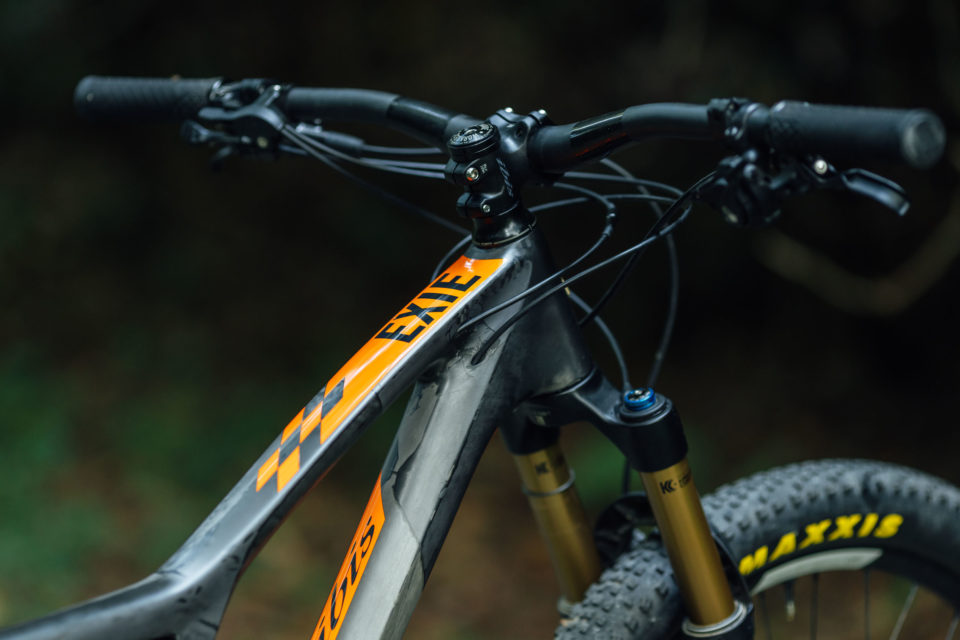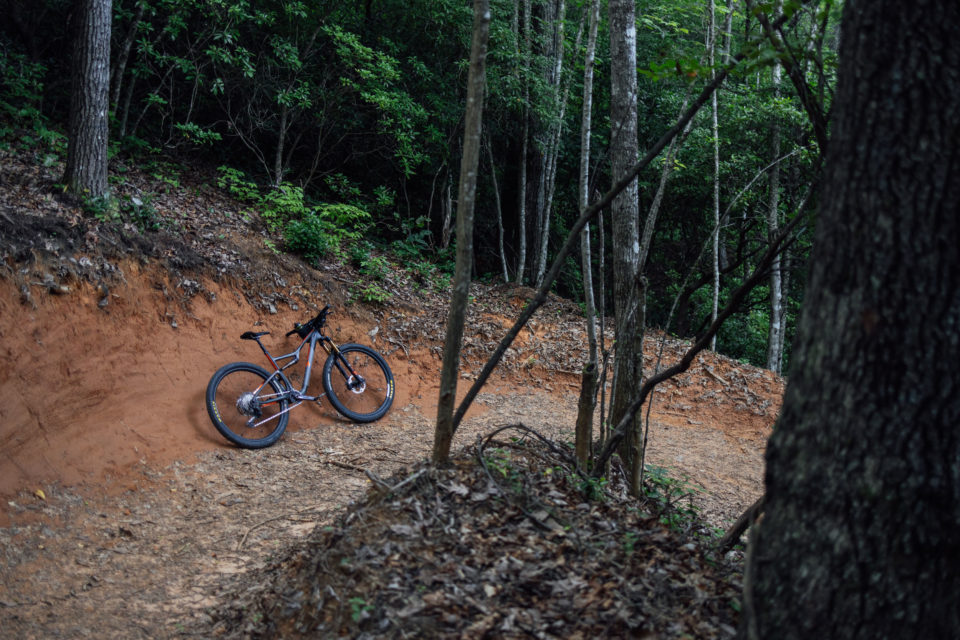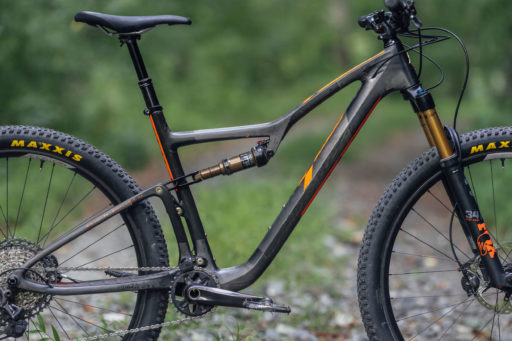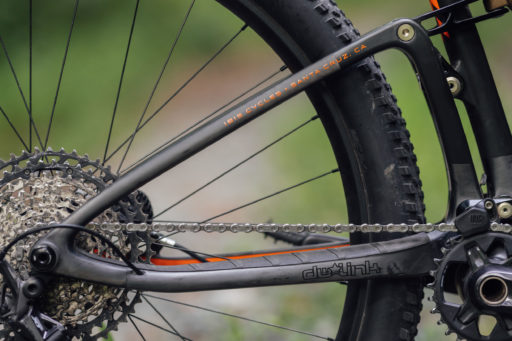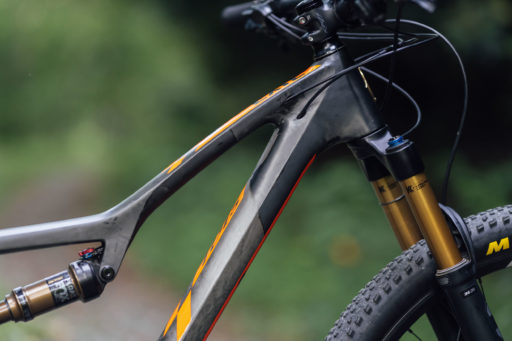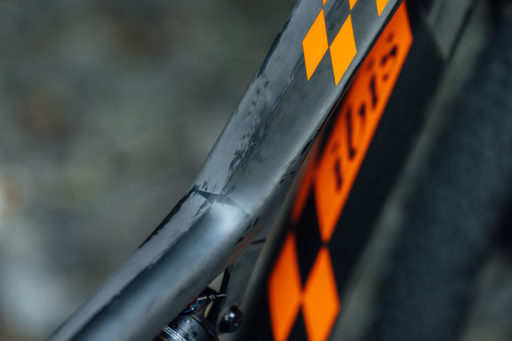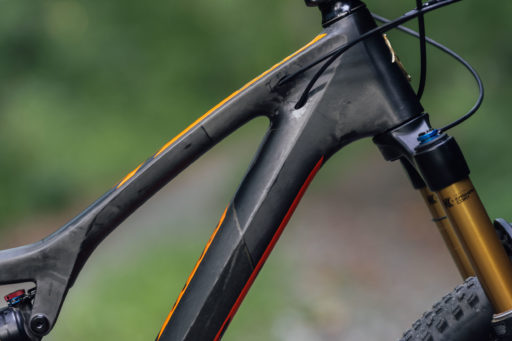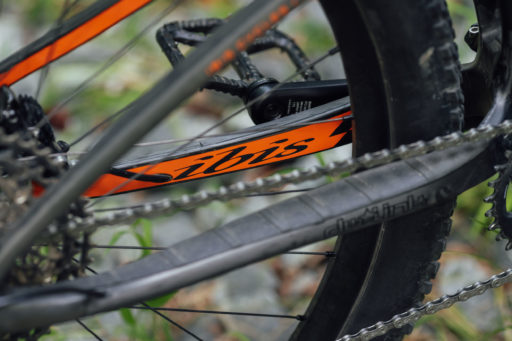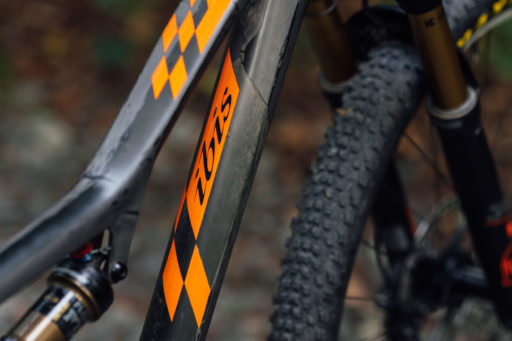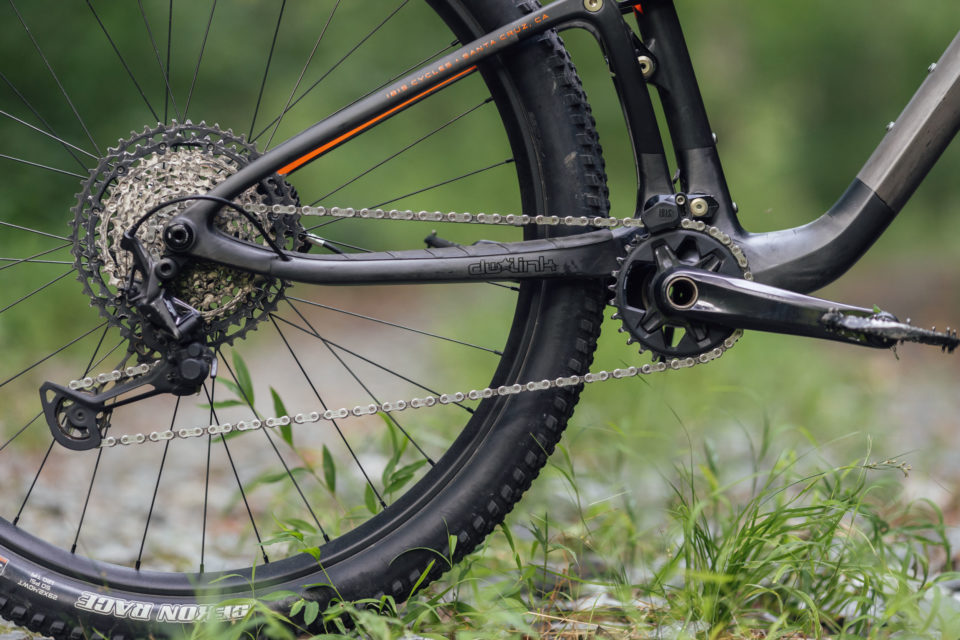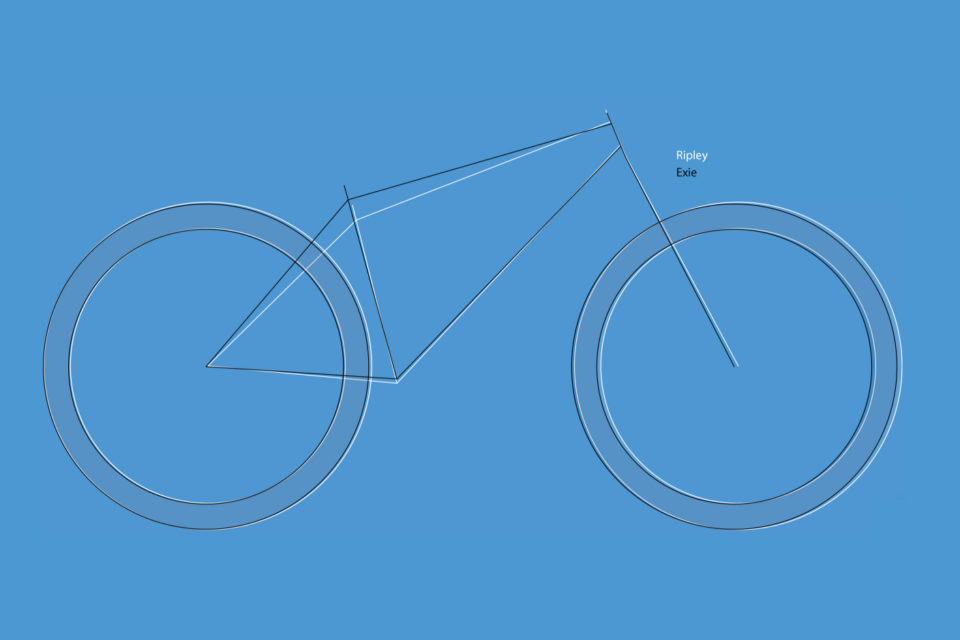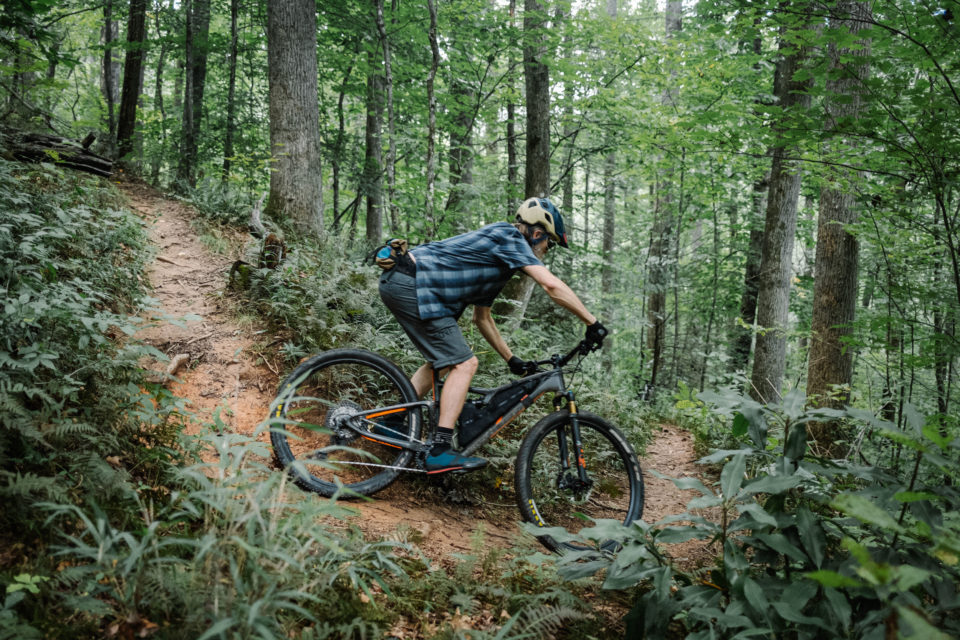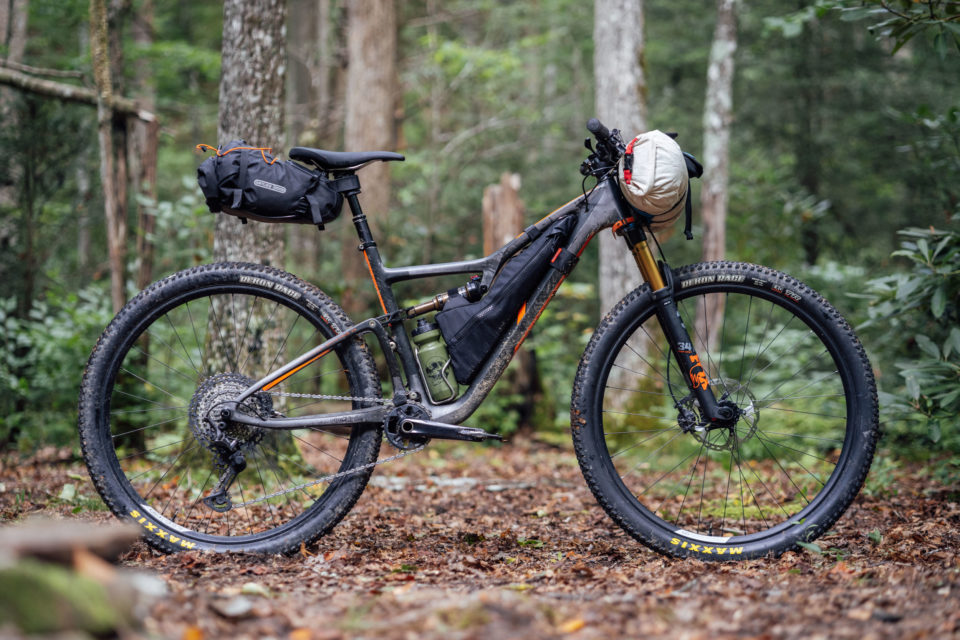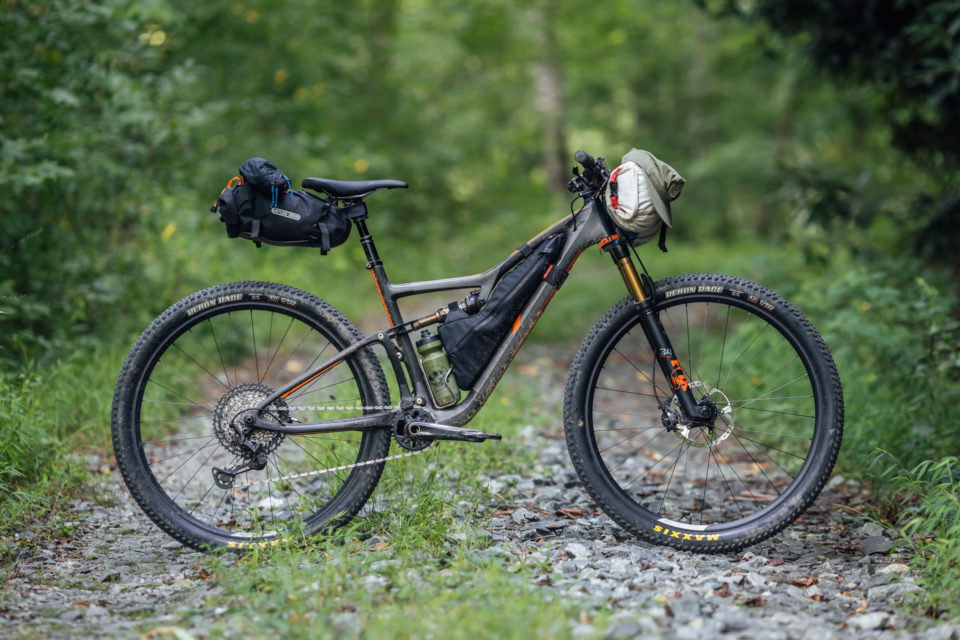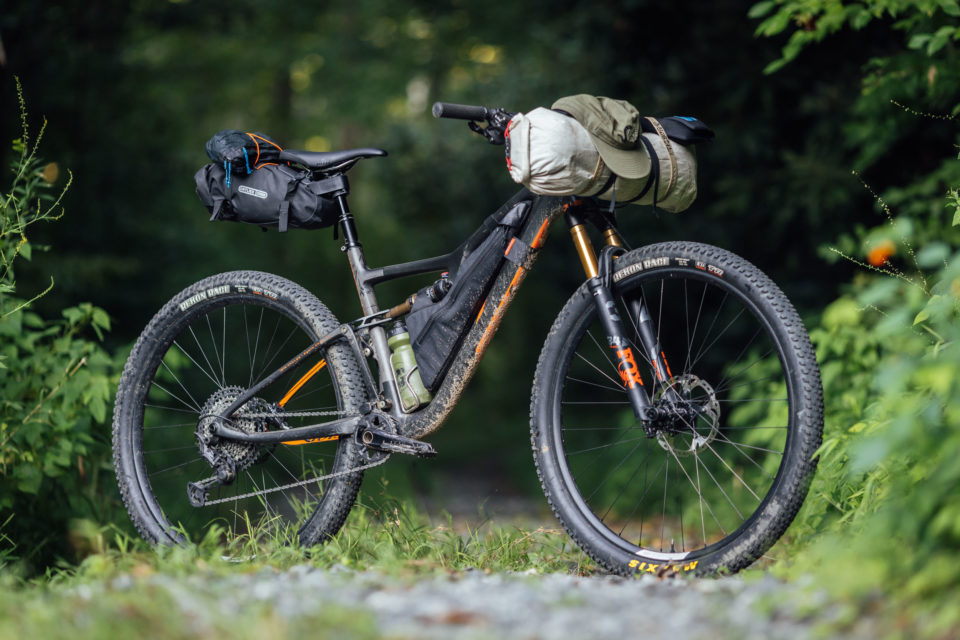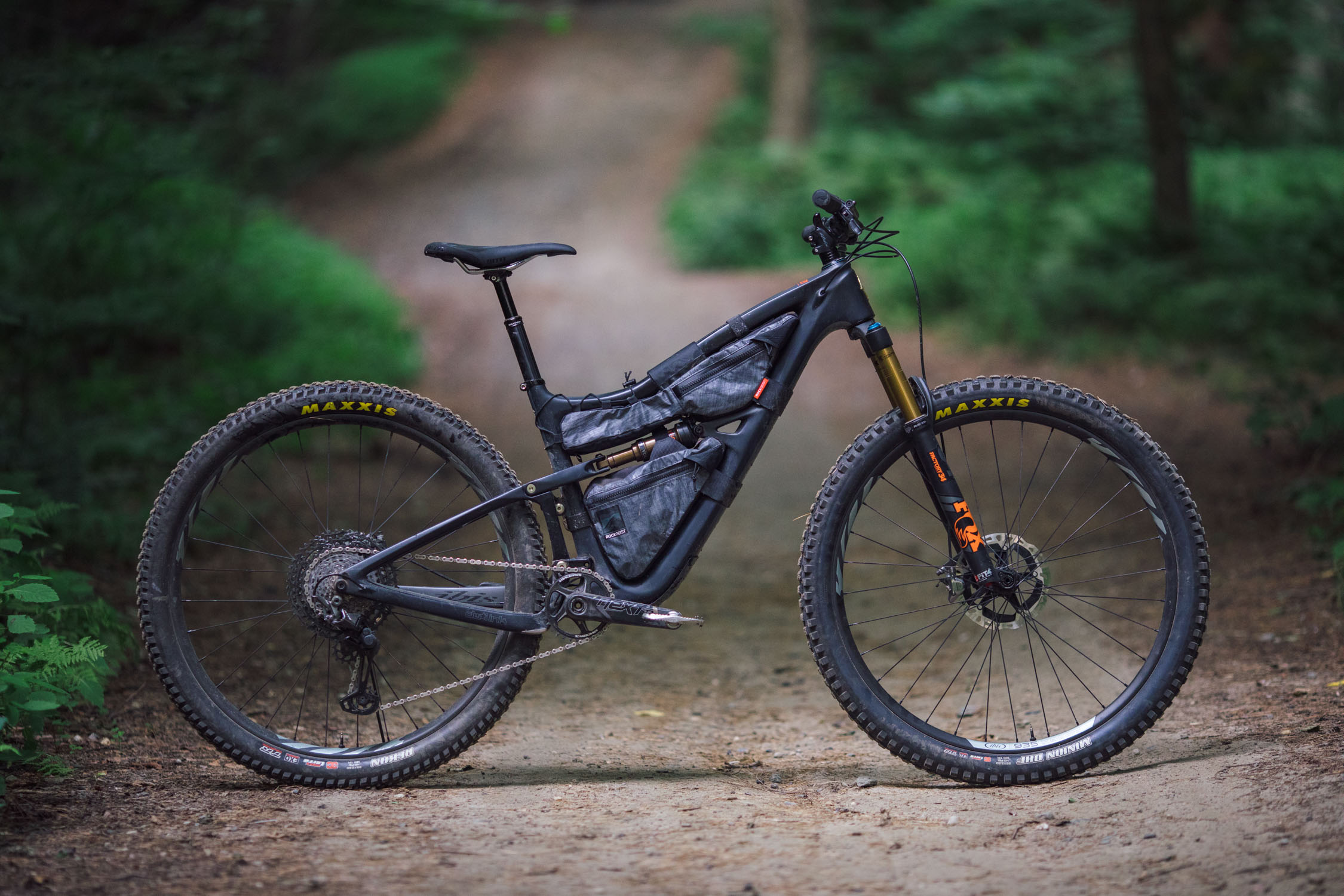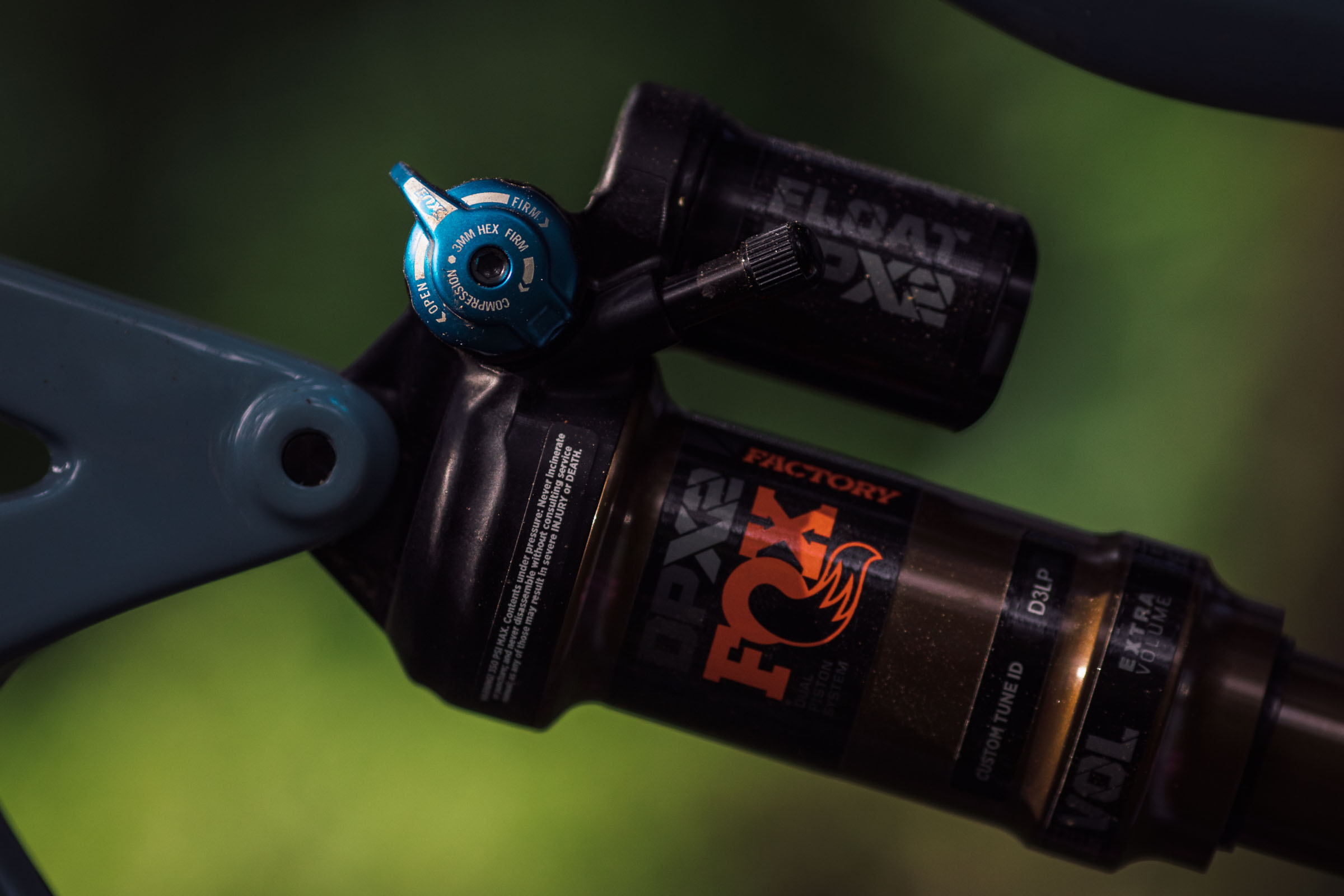Ibis Exie Review
The Ibis Exie is the brand’s latest creation, a cross-country bike with a sub-2,000-gram (4.4-pound) frame that’s designed, built, and tested in their solar-powered California factory. As longtime Ibis fans—and curious about the Exie’s bikepacking prowess—we had to give it a try. Find the full review here…
PUBLISHED Sep 12, 2022
Ibis Cycles doesn’t release new bikes very often. In fact, they don’t usually announce annual paint scheme tweaks or even assign model years to their ranger. Instead, they maintain a core family of great bikes and tweak them every couple or few years. This is an approach I find to be quite refreshing in an industry that’s governed by marketing-driven sales, one that lives and dies by the annual dog and pony show of the latest and greatest, and whether the market likes it or not. That approach also makes Ibis’ new bike releases all the more special.
All that being said, their latest creation, the Ibis Exie, shouldn’t have really excited me all that much. As its name phonetically implies, the Exie is an XC (cross-country) bike. More specifically, the brand positions it as a World Cup-capable race bike, a genre that doesn’t usually interest me whatsoever. However, it’s a new Ibis, so my interest was automatically piqued. Their claim that it’s just as at home on the race course as it is on backcountry trails sweetened the deal, but the chief motivator was the fact that its sub-2kg frame is designed and built in California, all within Ibis’ new 100% solar-powered factory. Not to mention, the carbon layup is a sight to behold. Read on for the review after many trail rides and bikepacking trips with this interesting bike.

The Ibis Exie is the first carbon fiber full-suspension bike that Ibis has developed and manufactured entirely in house. According to Ibis, it’s the culmination of a seven-year project to rethink every aspect of their process. The Exie is designed, built, and tested in their Pajaro, California facility, about a half-hour drive from their Santa Cruz headquarters, which is powered completely by a solar array and the warm California sunshine. A lot of the folks behind the Ibis brand have roots in manufacturing, so it was only fitting for them to want to make things in house instead of sending schematics off to a factory to be built far away.
The roadblock to manufacturing carbon bike frames in the US is competitive pricing. The cost of labor in the US (especially in California) is up to five times higher than it is in Asian factories. Ibis tried their hand at in-house manufacturing a few years ago by making a single frame in their Santa Cruz facility, the size small Ripley. That was an experiment to see if it could work, and now they’re going full steam ahead with the Exie.
The Ibis Exie Frame
The result is impressive. The carbon layup and finish on the Exie frame are stunning. As you can see in a lot of these photos—although they don’t do it justice—the frame has a beautiful layered texture and attention to detail that might make even the most critical Luddite eschew the plastic stigma of carbon and recognize its potential as an artful material.
The Exie is also the lightest full-suspension frame Ibis has ever produced, at more than a pound lighter than the Ripley. The frame weight of a size medium is 4.4 pounds (~2kg) with a shock (metric 190 x 45). The size large complete I tested weighed 25.9 pounds (11.75 kilograms), and Ibis claims the highest-end build weighs under 23 pounds.
The Exie has the same DW-link suspension design as the Ripley, and aside from its weight, there’s nothing wildly unusual or special about the Exie frame, save maybe the cavernous frame triangle that easily fits two water bottles (more on that later). It has a 1x-specific carbon front and rear triangle with clearance for 29 x 2.4″ tires, 120mm of front travel, 100mm DW-link rear suspension, a threaded 73mm bottom bracket, Boost hub spacing, and is available in four sizes (S-XL) to fit riders between 5’0″ and 6’6″ tall. Other frame features include a 180mm max rotor size, IGUS bushings in the lower link and bearings in the upper link, and a molded rubber chainstay protector and lower link protectors. The Exie is available in “Cheat-O Orange” and “Bug Zapper Blue” with the three build kits starting at $7,999 and a frame-only option available for $4,500.
Ibis Exie Deore XT Build Kit
Apart from the integrated upper chain guide, the Exie’s base kit that comes on all builds is decidedly XC, featuring a Fox Performance DPS shock with remote lockout, a lightweight Fox 34 Stepcast 120mm fork, and Maxxis Rekon Race tires front and rear. It was kind of nice to have the remote lockout. It isn’t a true lockout, but it allows both the fork and the shock to be switched to a firmer setting with the flip of a lever. It certainly made the Exie seem even more efficient when climbing, although I don’t think this is something I’d opt for in a build considering the added cables. The biggest change I’d make to the kit is replacing the front tire with something slightly beefier, which I think would increase this bike’s versatility.
- Fork Fox 34 SC Fit 4 Remote 120mm, 44mm rake, Kabolt
- Shock Fox Float DPS Remote w/ adjust, 190 x 45, light rebound and compression
- Wheels Ibis 933 Aluminum Rims, Ibis Hubs
- Tires Maxxis Recon Race 29″ x 2.4″ Exo/TR WT
- Brakes Shimano XT M8100, 2 Piston
- Brake Rotors Shimano SM-RT86 180/160
- Cranks Shimano XT M8100, 30t Alloy Ring S/M: 170mm, L/XL: 175mm
- Bottom Bracket Shimano XT MT800
- Rear Derailleur Shimano XT M8100 Shadow Plus 12 speed
- Shift Levers Shimano XT M8100 12 speed
- Cassette Shimano XT 10-51
- Chain Shimano XT M8100 12 speed
- Headset Cane Creek 40: IS 41/28.6 upper, IS 52/40 lower
- Grips Lizard Skin Charger
- Handlebar Ibis 800mm Hi Fi Bar
- Stem Industry Nine A318 S/M: 40mm, L/XL: 50mm S/M 40mm, L/XL 50mm
- Seatpost Bike Yoke Revive Dropper S/125mm, M/160mm, L/185mm, XL/213mm
- Saddle WTB Silverado 142

Moving into the $7,999 Deore XT kit that I tested, I have no real complaints other than the single-piston brakes. The size-specific BikeYoke dropper is a nice touch (S: 125mm, M: 160mm, L: 185mm, XL: 213mm) as it’s one of only a handful of dropper posts I truly trust.
On the Trail (Ibis Exie vs. Ripley)
I’m a bit of a fanboy of Ibis Cycles, admittedly. It’s not that I’ve developed a dogmatic affinity for the brand, it’s that I’ve always had a great experience with their bikes. I’ve typed this before on the site, but to reiterate, I bought the Ibis Ripley after testing a bunch of other short-travel 29ers. It’s that good of a bike. We later bought Virginia a Ripley AF for all the same reasons. In short, the Ripley excels in the short-travel 29er category as a backcountry trail bike. And since the Ripley got the “longer slacker” treatment back in 2019, the brand’s lineage was left without a dedicated XC platform. The Ripley is still a relatively conservative short travel 29er, but Ibis clearly wanted to make something that had all the DNA of a light and fast race bike.

From ride one, I found the Exie to be faster and quicker than the Ripley, as expected. Honestly, I can say without hesitation that it’s the fastest and most efficient full-suspension bike I’ve pedaled. During the testing period, I often found myself choosing the Exie for gravel and dirt road spins over my drop-bar bikes that are made for such outings. The fact of the matter is the suspension platform is dialed. It handles small bumps better than my Ripley, and it has a planted “stick to the ground” feel that seems to be the secret sauce to its efficiency.
As much as it may sound like a trope, the Exie’s design and suspension platform feel like they’re tuned to perfectly harness every newton of energy that’s put into the pedals without the loss that usually goes hand in hand with suspension. Conversely, it seems to work with bumps and undulations that might cause you to lose momentum on a rigid bike and allows you to maintain force throughout the ride. While all this sounds like marketing speak, this is the first bike I’ve ridden where I truly felt it manifested in the ride. I think part of it is the amount of travel. 100/120 vs. 120/130 may not seem significant, but it makes a big difference. I also think a lot can be said about the sum of the parts: a really well-executed geometry, suspension system, and component spec that all add up to a near-perfect result.
One thing I was surprised by when comparing these two bikes is that the Exie felt shorter and didn’t seem to fit me quite as well as the Ripley. Oddly, as you can see in the geometry comparison, the Exie has a longer reach and a lower stack height, so this wasn’t at all expected. I have no explanation for this, but wanted to make a note of it.
Going gets Rougher
I never really felt underequipped in the suspension department on the Exie. It’s not harsh, and it’s a nimble enough that it encourages you to ride with a particular grace within lines, instead of through them. Despite its sure-footed velocity, the Exie is surprisingly playful, too. I often found myself playing with roots, hitting features, and working to try and bring finesse to the trail, making it a very fun bike to ride.
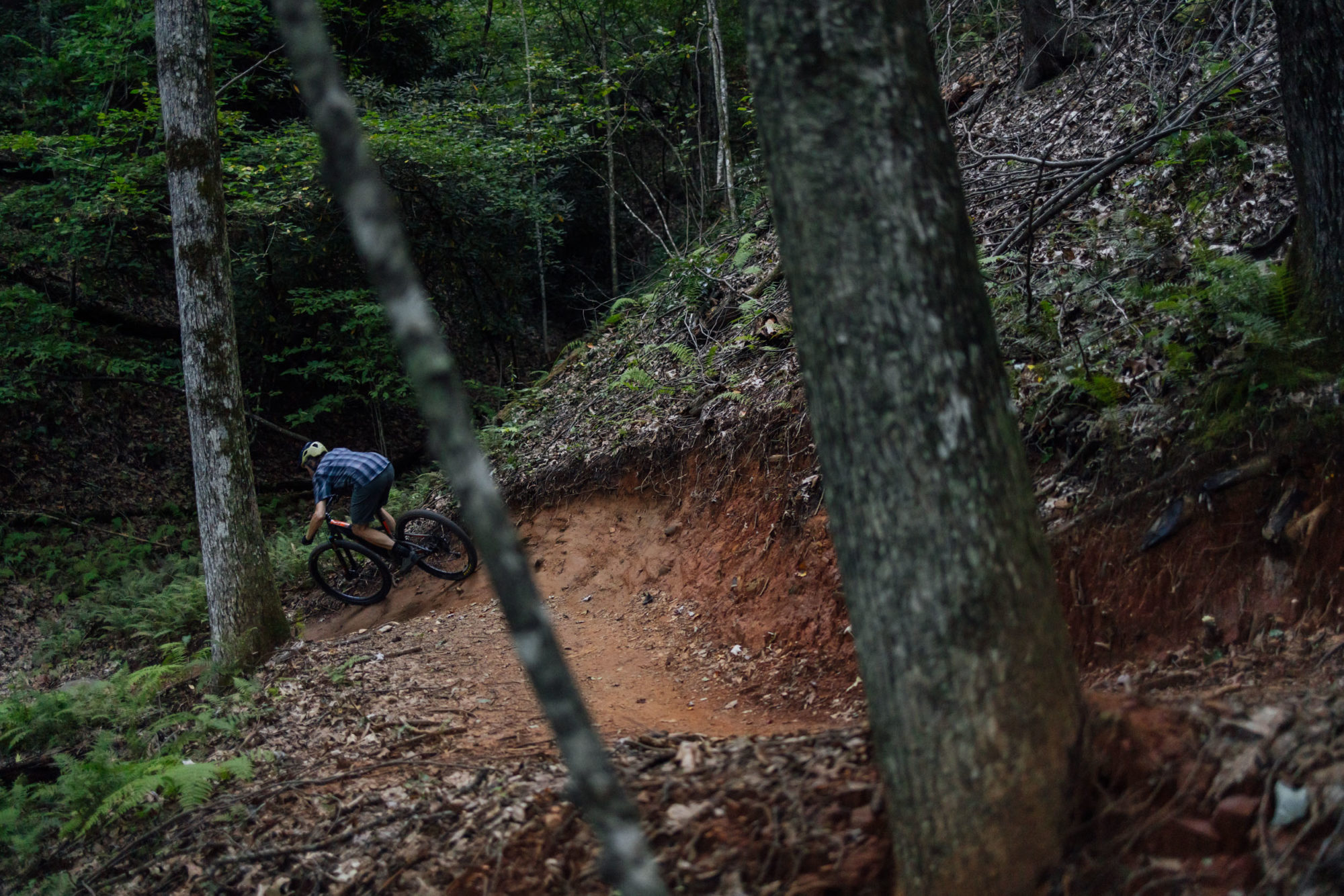
Where the Exie falls off a little is on steep and technical downhills. That’s where I felt like I brought more of a sharp pocket knife to a machete fight at times. It’s not just that it simply has less suspension travel; I think it can be partially attributed to a geometry that’s not as conducive to plunging through the rowdy stuff. Don’t get me wrong, it punches a little above its weight class, but the Ripley is decidedly more comfortable on this type of terrain than the Exie. I think that a front tire change could help its versatility, but I also think that when compared to the Ripley, its nearly 1-degree steeper front end (2 degrees from the AF) and 1.2cm-higher bottom bracket keep it from being too far on the more aggressive side of the “trail” or “downcountry” category scale that bikes like the new Element or Ripley AF exist in.
In the end, I decided that was okay. I’ve found that all bikes suffer a little on one side or the other, and this one is the zen master of its own niche, making it a great option for endurance athletes or recreational riders who place more of a priority in efficiency and performance over steep and rowdy downhills—or a priority on flow trails and cross-country riding. It’s good to have bikes that excel within a particular zone.
While Out Bikepacking
The most obvious bikepacking-friendly feature of the Ibis Exie is its massive frame triangle. The Exie has space and mounts for two water bottles inside the front triangle on every size frame. That makes it one of a few full-suspension frames out there that can have a “wedge” frame bag, meaning it can fit a standard 22oz (650ml) water bottle on the seat tube mounts and a small frame bag that fills the remainder of the space. I love this configuration as it perfectly distributes weight and makes good use out of the full frame triangle. I was able to fit a fair amount of gear in this custom Rockgeist bag, including a small 700ml pot and cook kit, two meals and snacks, tools, and a couple of other odds and ends. One other hidden perk is the nice “portage handle” left unencumbered above the shock. It’s the perfect size and position for helping lift the bike over deadfall or other such impediments.
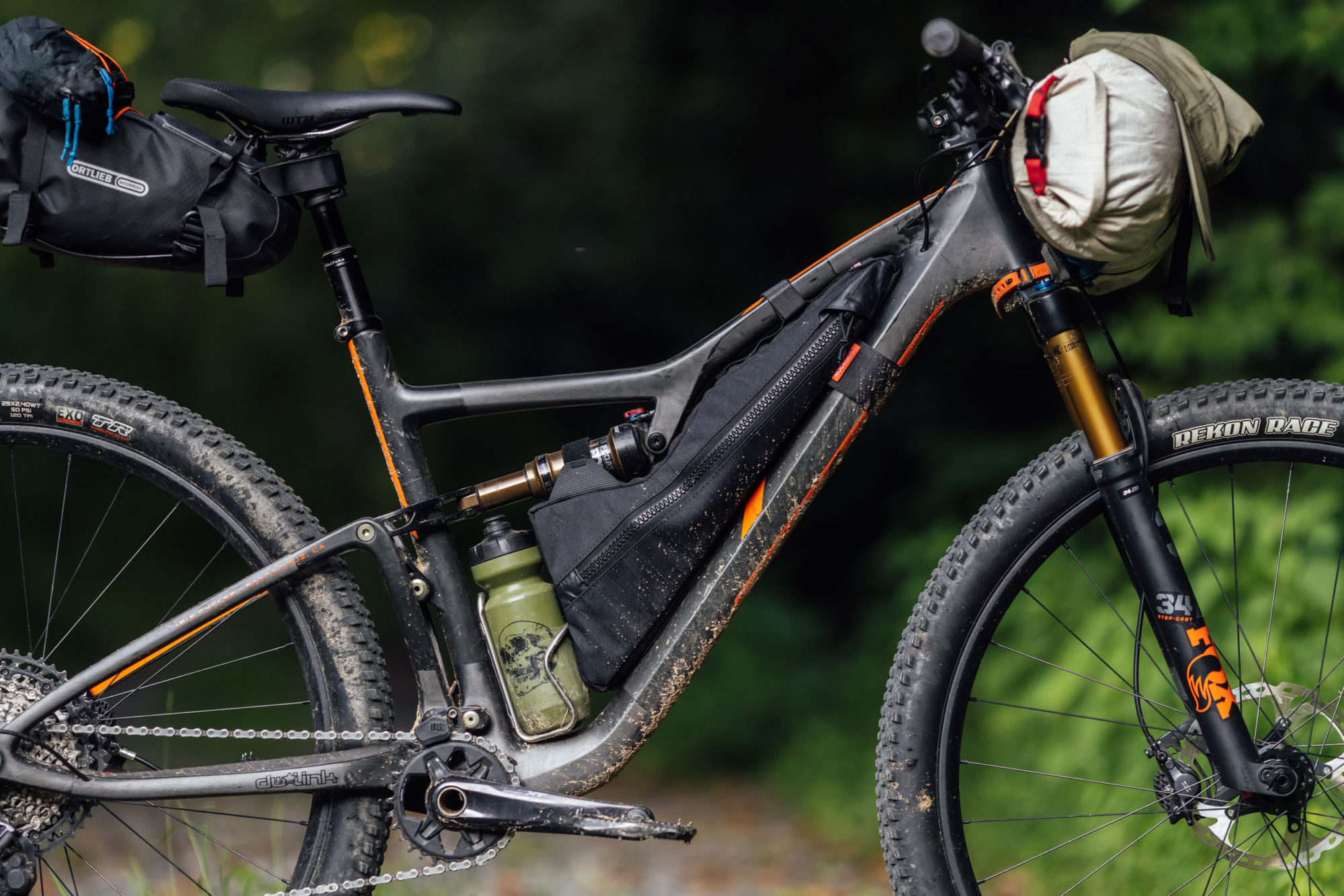
Additionally, all the ride characteristics I loved about the Exie when it was unloaded on singletrack trails and dirt roads carried over when the bike was packed up with gear. Granted, I kept the kit relatively light and only took it out on overnighter rides—keeping to the true nature of this featherweight machine. But the frame never felt flimsy or ill-equipped. It seemed to keep its signature responsive pedal feel and quickness, and still maintain that plush small bump efficiency that I came to really appreciate.
- Model/Size Tested: Ibis Exie, size Large, Deore XT build
- Actual Weight: 25.9 pounds (11.75kg)
- Place of Manufacture: California, USA
- Price: $7,999
- Manufacturer’s Details: IbisCycles.com
Pros
- Lightweight and beautiful frame made sustainably in the USA
- Extremely fast feeling with an efficient demeanor; could be perfect for ultra-endurance racing/riding
- Incredibly sure-footed “stick to the trail” feel
- Excellent suspension design handles small bumps incredibly well and feels bigger than it is
- Massive frame triangle and built-in “portage handle”
Cons
- Starts to lose its edge on burly technical downhills
- A couple of build specs aren’t ideal, in my opinion, including the Rekon Race front tire and the single-piston brakes
Ibis Exie Review Wrap Up
I feel that this review of the Ibis Exie was pretty well summed up in the final sections above, but I’ll reiterate a few of the takeaway points and talk a little bit about who this bike is for. When compared to the Ripley, the Exie is in its own class for speed and efficiency. It was pretty clear that it operates at a high level in that regard, even though I haven’t tried a lot of bikes in this category, nor am I an XC racer.
Ultimately, I’m pretty sure the Exie would be at the top of my list if I were interested in singletrack- or rough dirt road-heavy ultra-endurance racing rig, tackling the likes of the Colorado Trail Race, Arizona Trail Race, TNGA, or the HT550. Otherwise, I also think it’s well-suited for anyone who prefers flow trails or pedaling efficiently on cross-country over rough-and-tumble downhill riding.
In the end, I found that the Exie excels at what it’s designed for, yet has a much more playful disposition than its pedigree might suggest. I definitely didn’t want to send it back at the end of my test period.
Related Content
Make sure to dig into these related articles for more info...
Please keep the conversation civil, constructive, and inclusive, or your comment will be removed.














